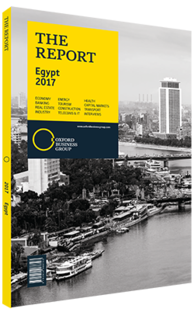Mohab Mameesh, Chairman and Managing Director, Suez Canal Authority (SCA): Interview

Interview: Mohab Mameesh
What are the next steps required to further develop manufacturing activity around the Suez Canal?
MOHAB MAMEESH: The SCA has prepared a master plan for developing the SCZ one, which includes a number of projects across several sectors, including petrochemicals, pharmaceuticals, shipbuilding and maintenance, automotive, appliances and electronics, and the food industry. We have also worked on a number of industrial projects that are helping to increase industry and manufacturing in the area, like the El Nasr floating bridge, which was constructed in full by one of the Suez Canal shipyards. Additionally, the conclusion of a joint cooperation agreement between a subsidiary of the SCA and the De Kisat shipyard in Sweden for the purpose of producing aluminium fast boats and zodiacs can also serve as an example of the kind of future agreements that can help support industry and manufacturing around the SCZ one. It is important to recognise that the support of manufacturing often has a beneficial impact down the line, as other jobs are created in related sectors or in support of the key industries that are being developed.
How are low energy prices affecting traffic volumes through the Suez Canal?
MAMEESH: Traffic movement is directly affected by the global economy, world trade, and international and regional political conditions, as well as the state of the maritime transport market. The global economy is steadily rebounding from the sluggish growth witnessed recently due to the recession and economic crises. This recovery is projected to create more stable economic growth rates, which in turn should lead to an improvement in Suez Canal traffic in the coming years.
Of the most demanding and unprecedented challenge that the Suez Canal faced in 2016 was the decline in fuel prices. This has had a negative impact on traffic movement in the canal because the speed of delivery and length of voyage became less important factors in the logistical calculus. However, it is expected that the recovery in oil prices will have a positive impact on traffic by increasing the canal’s competitiveness in regard to savings achieved in both cost and time when compared to alternative routes.
Furthermore, the IMF projected in the global growth rate in 2017 would rise to 3.4%, compared to the 3.1% growth rate in 2016. Expanding growth, especially in India and South-east Asia, is set to amp up trade through the Suez Canal. East Africa has been at the forefront of new oil and gas discoveries, and the region’s ability to produce and export liquefied natural gas to European markets will definitely increase movement through the Suez Canal as that industry develops.
What impact do you expect from the completion of the Panama Canal expansion programme?
MAMEESH: The Suez and Panama Canals are direct competitors in the container-shipping industry between the Far East and the eastern coast of North America, which accounts for 10% of the movement that passes through the Suez Canal. It is expected that the importance of the Suez Canal will increase even after the completion of the Panama Canal expansion because the Suez route to South-east Asia (such as Thailand and Malaysia) from the eastern coast of North America is shorter than the route through the Panama Canal. Furthermore, due to the evolution in ship size to cope with trade growth, it is also expected that bigger ships will use the Suez Canal route, making it an even more important anchor of global commerce due to its capacity to accommodate large container vessels of up to 20,000 twenty-foot equivalent units.
My expectation is that the inauguration of the Panama Canal expansion could drive the major shipping lines to redraw maritime services and operations. Vessels would then be able to transit through the Panama Canal and then pass through Suez Canal, and vice versa, which would be mutually beneficial for both canals.
You have reached the limit of premium articles you can view for free.
Choose from the options below to purchase print or digital editions of our Reports. You can also purchase a website subscription giving you unlimited access to all of our Reports online for 12 months.
If you have already purchased this Report or have a website subscription, please login to continue.

